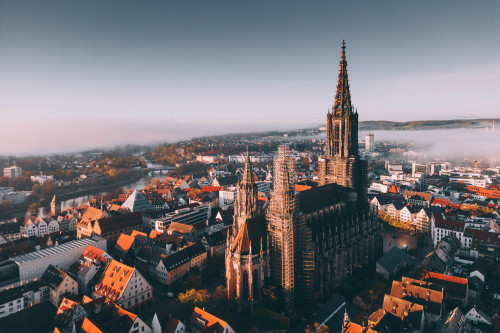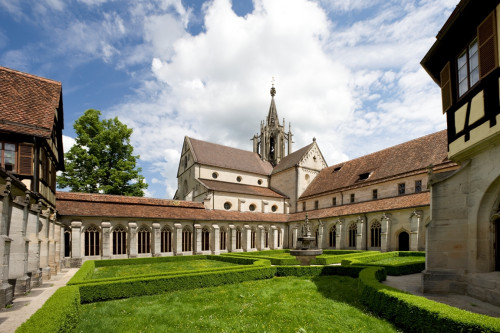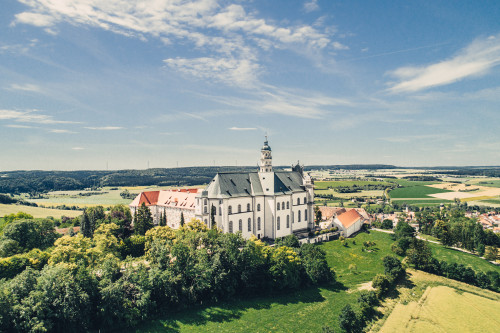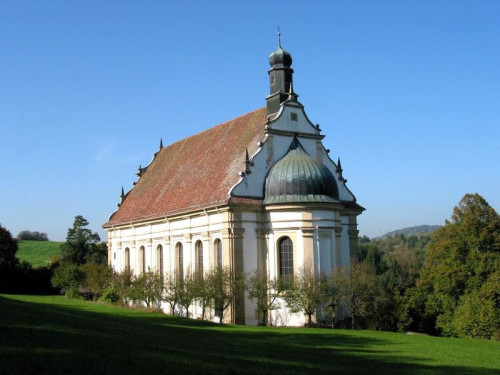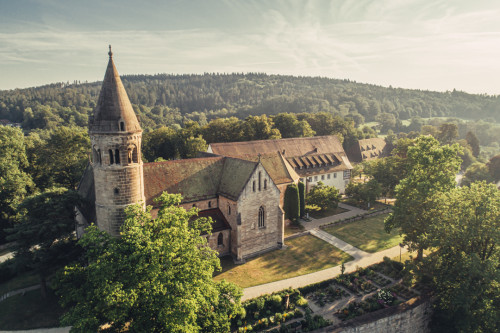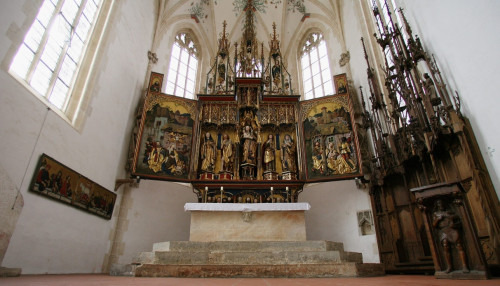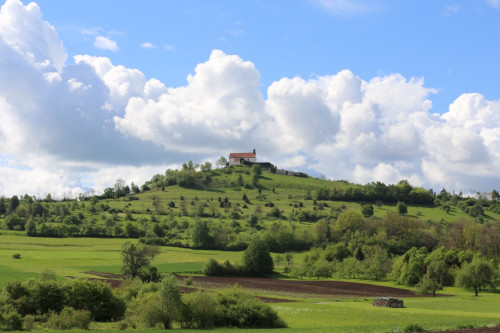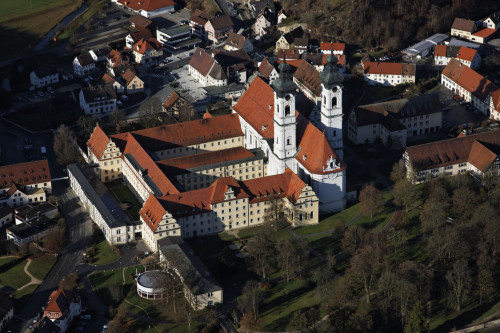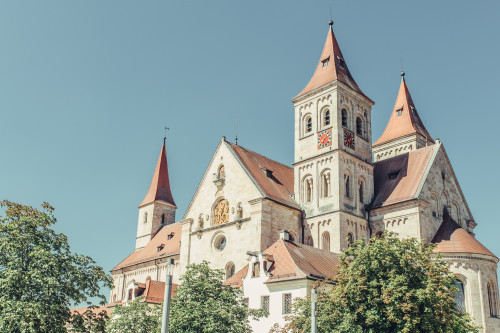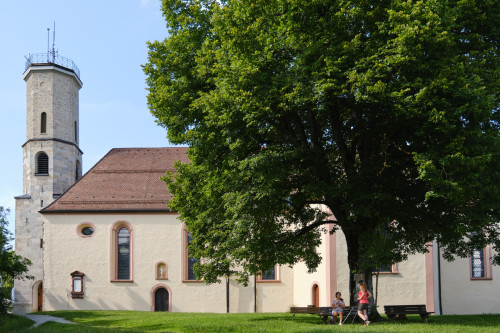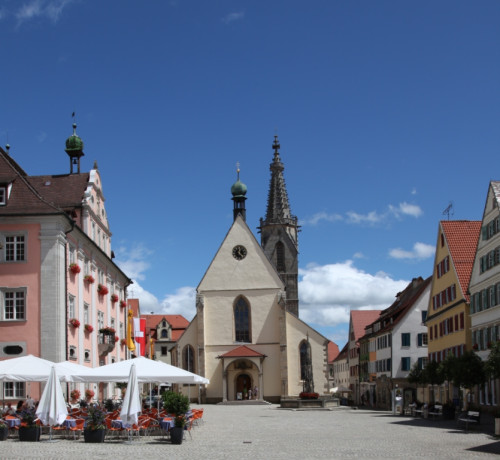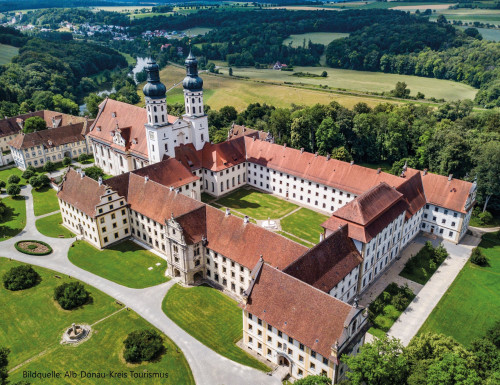Sacred traces
Ulmer Münster
Church
Ulm
The size of a cathedral, this church is one of the world’s architectural masterpieces, with a spire soaring an amazing 530 ft/161.53 m into the sky. Although construction began back in 1377, it was not finished until 1890. Then, it was the world’s tallest building; but this record lasted only until Philadelphia’s city hall was completed in 1901. But, it is still the tallest church in the world, the equivalent of 66 storys high!
Bebenhausen Monastery and Castle
Monastery
Tübingen
The medieval monastery complex of Bebenhausen is nestled in the rolling hills of the Schönbuch Nature Park. Some of the buildings were converted into a royal hunting lodge in the 19th century.
Benediktinererzabtei Beuron
Monastery
Beuron
The monastery of Beuron, with its baroque building fabric characterised by the "Beuron style", its works of art and documents, forms an important monument in south-western Germany.
The precious cultural assets are complemented by the extensive monastery library and the internationally renowned Vetus Latina Institute.
Kloster Wiblingen
Monastery
Ulm
The Benedictine Monastery of Wiblingen is about 5 kilometres from the centre of Ulm.
Benedictine Abbey Neresheim
Monastery
Neresheim
Neresheim Abbey is a cultural monument of European rank. The history and quality of its buildings make the Benedictine Abbey of Neresheim a unique destination.
Wallfahrtskirche Weggental
Church
Rottenburg am Neckar
The baroque pilgrimage church and monastery Weggental is idyllically located on the outskirts of the historic diocesan town of Rottenburg am Neckar. Its origins can be traced back to a wayside shrine in Weggental from around 1450/1460, which enjoyed a special devotion to the Mother of God.
Ehemaliges Benediktinerkloster Lorch
Monastery
Lorch
Lorch Monastery is visible from afar on the heights above the Rems Valley. It was founded by the Staufers in 1102 as a family burial ground.
Kloster Blaubeuren
Monastery
Blaubeuren
The choir room is the heart of the monastery complex. The ensemble of stone and wood, built in the late Middle Ages, is entirely oriented towards the sanctuary, where the high altar has its place.
Wurmlinger Kapelle
Chapel
Rottenburg am Neckar
"The chapel stands above, looking quietly down into the valley...". Ludwig Uhland already appreciated the simple beauty of the Wurmlingen chapel.
The chapel is enthroned high above the Neckar and Ammer valleys and offers a magnificent panoramic view.
Münster Zwiefalten
Minster
Zwiefalten
One of the most beautiful rococo-style churches on the Upper Swabian Baroque Route.
Basilika St. Vitus
Church
Ellwangen (Jagst)
The basilica is the most important sight and the architectural highlight together with the neighbouring Protestant town church in the town centre. It is considered the most important late Romanesque sacred building in Swabia.
Collegiate Church of St. George
Church
Tübingen
On the Neckar front, it towers behind the comparatively small, narrow houses of the old town like a protector. It was built in the Swabian hall church style as a late Gothic church at the behest of Count Eberhard im Barte, the founder of the university, between 1470 and 1493.
Wallfahrtskirche Dreifaltigkeitsberg
Church
Spaichingen
The pilgrimage church is located on the 985 m high Dreifaltigkeitsberg above Spaichingen.
Dom St. Martin
Cathedral
Rottenburg am Neckar
Anyone coming to Rottenburg will see it from afar: the 58-metre-high, late-Gothic tower of St. Martin's Cathedral, rising high above the city's rooftops to the sky.
Barocke Klosteranlage Obermarchtal
Monastery
Obermarchtal
The only architecturally self-contained, completed and completely preserved baroque monastery complex in Upper Swabia can be found in Obermarchtal.
